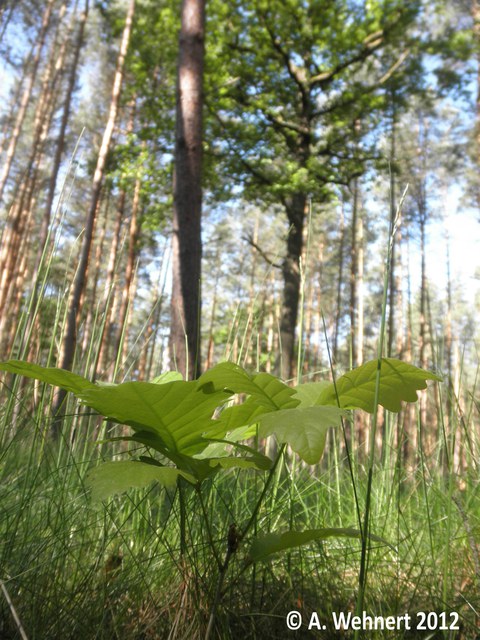Räumlich-explizite Simulationsmodelle für die Naturverjüngung von Eiche in Kiefernreinbeständen des Nordostdeutschen Tieflands (SIMONA-REX)
Die verfügbaren waldbaulichen Verfahren und Techniken zur Etablierung natürlicher Verjüngung haben eine lange Tradition in Mitteleuropa. Waldbauliches Handeln ist vor eine besondere Herausforderung gestellt, wenn es gilt, Kiefern- oder Fichtenreinbestände auf naturnahem Wege mit Mischbaumarten anzureichern. Künstliche Waldumbauverfahren können sich, je nach Ausgangsbedingungen des Standortes oder Bestandes als arbeits- und kostenintensiv erweisen. Dies gilt umso mehr, wenn die zukünftige Zielbaumart, die über ein naturnahes Verjüngungsverfahren etabliert werden soll, nicht oder nur in geringem Umfang im definierten Waldumbaugebiet präsent ist. Das geplante Forschungsprojekt hat das Ziel, die Verbesserung naturnaher Verjüngungsstrategien in Regionen mit schwierigen standörtlichen und ungünstigen strukturellen Ausgangsbedingungen wissenschaftlich zu unterstützen. Dazu werden die natürlichen Verjüngungspotenziale der Eiche in kieferndominierten Arealen auf Landschafts- und Bestandesebene quantitativ ermittelt. Dabei werden sowohl das Vorkommen der Samenbäume, das Ausbreitungspotenzial der Eichen als auch die Präsenz von Alteichen, die Bestandeskonstellation des Kiefernaltbestandes und die Filterwirkung der Begleitvegetation als entscheidende Einflussgrößen in die räumlich-expliziten Analysen einbezogen. Auf Basis dieser Analysen werden Simulationswerkzeuge entwickelt, die zur Erweiterung naturnaher Waldbau- und Waldbewirtschaftungskonzepte beitragen. Mit ihrer Hilfe können Effekte der Waldbehandlungsszenarien für unterschiedliche Ausgangssituationen im Vorfeld geprüft und eine optimale Umsetzung in die Praxis unterstützt werden. Damit leistet das Forschungsvorhaben einen wesentlichen Beitrag zur Verbesserung der Flexibilität und Anpassung naturnaher Verjüngungsstrategien in Regionen mit schwierigen Ausgangsbedingungen.
